All about the hornbeam tree
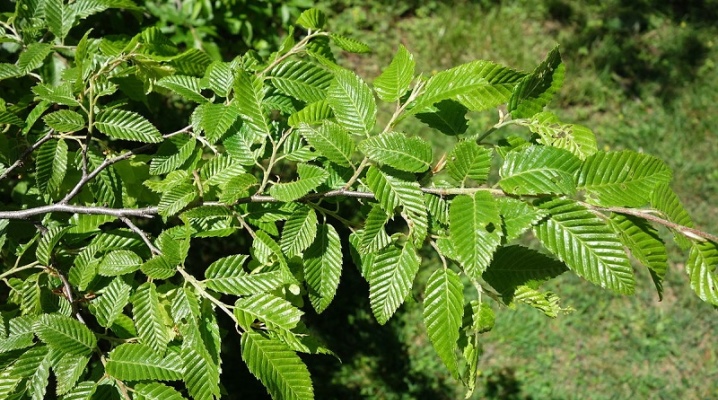
The graceful hornbeam is ideal for self-breeding. The culture is capable of developing in almost any conditions, does not require special care and tolerates pruning well.
Description
Most often, the hornbeam looks like a full-fledged tree, but there are also varieties that resemble large shrubs. The plant, whose Latin name sounds like Cárpinus, belongs to the Birch family. The ribbed stem of the culture is covered with gray bark - either smooth or covered with few cracks. The foliage is 3 to 10 centimeters long. The fruits are nuts that appear on the tree in an amount of 10-30 pieces. The seeds are devoid of endosperm, but have aerial cotyledons.
The culture has good immunity, therefore, in most cases, it suffers from only one disease - heart rot.


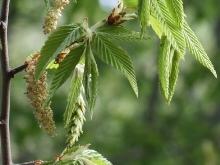
Where does it grow?
Most of the hornbeam varieties grow in Asian countries, mainly in China. In Europe, there are only two types of culture, but almost everywhere. In Russia, the tree can be found only in the Caucasus. Interestingly, hornbeam grows in Iran as well.


Varieties and varieties
There are over 30 species of hornbeam, most of which grow in Asian countries.
Hearty
The heart-leaved hornbeam is characterized by the presence of almost transparent, light, heart-shaped leaf blades, as you can guess from the name. In its natural environment - Korea, Japan and Primorye, the tree reaches almost 20 meters. The crooked stem of the culture is covered with ribbed bark. Creeping roots have the power to hold the layers of soil together and even prevent them from slipping.
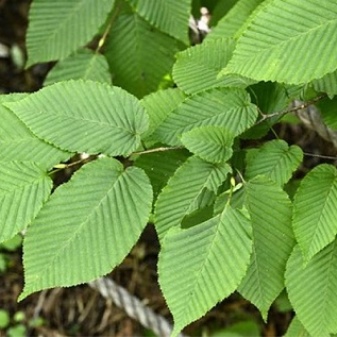
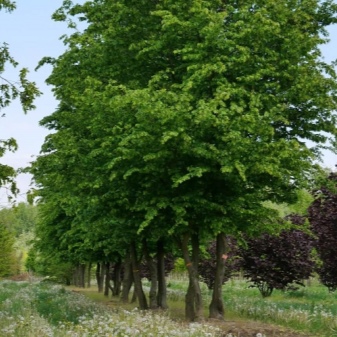
Karolinsky
The Karolinska hornbeam grows in North America. It is capable of developing well only in warmth and shade; it also prefers high humidity near swamps or water bodies. Low temperatures have a negative effect on the culture. The crown of the tree is very lush. A subspecies of the Karolinsky hornbeam is the Virginian hornbeam, which is more decorative and is often used in landscape design. This variety develops rather slowly, but responds well to haircuts and transplants.
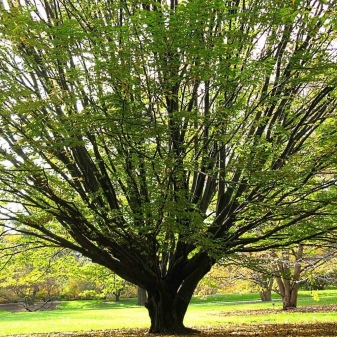
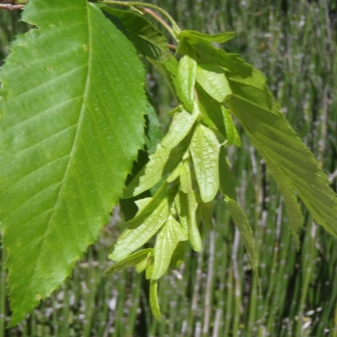
Ordinary
The common hornbeam reaches a height of 20 meters. The tree has a patterned bark and a spreading ovoid crown formed from thin leaf blades. Most often, the culture develops either in well-lit places, or with partial shade. It is worth noting that, in contrast to the shape of the crown, the common hornbeam can be pyramidal (fastigiata hornbeam), columnar and weeping (like a pendula hornbeam resembling a willow with thin twigs). Hornbeam with a carved crown is famous for its narrow sharp leaves, and with an oak-leaved crown - plates with wide teeth.
There is also a hornbeam, the leaves of which, after blooming, take on a purple hue, which then changes to green.
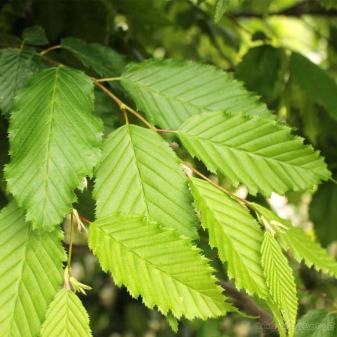
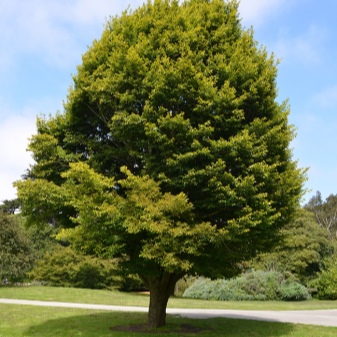
Turchaninov
The Turchaninov hornbeam is found in the mountains of China. This variety is considered quite rare. The color of the leaf blades is constantly changing, which explains the frequent choice of this hornbeam for creating topiary and bonsai.
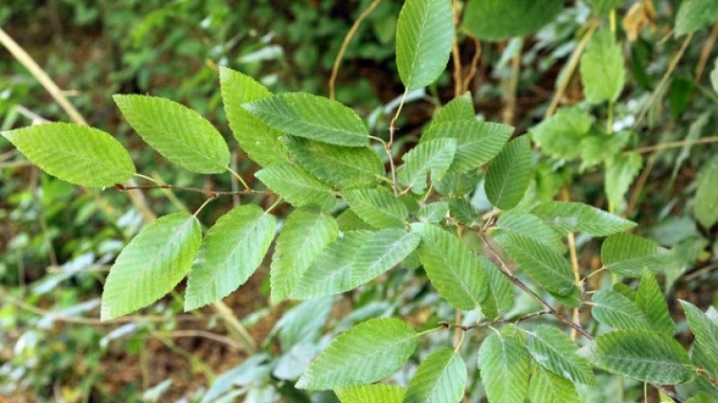
Black
The black hornbeam, also known as the eastern hornbeam, reaches 5-8 meters in height, but in some cases it stretches up to almost 18 meters. The curved trunk is often covered with gray ribbed bark. A dense crown is formed by oval leaves 2 to 5 centimeters long. The black hornbeam blooms in April, and begins to bear fruit in the middle of summer.
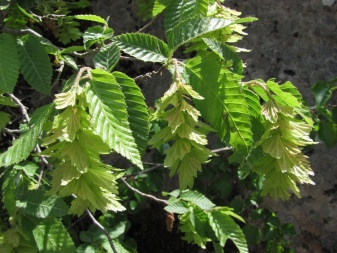
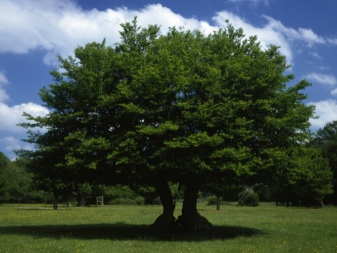
Japanese
The Japanese hornbeam grows throughout Japan. A culture that prefers warmth and tolerates shade well, develops rather slowly. The average tree height is 6-9 meters. Corrugated leaf plates form a dense dark green crown.

Other
The Caucasian hornbeam can be found either in the Caucasus or in Asian countries. Its height rarely exceeds 5 meters, and in some cases, a very overgrown bush is formed. Best of all, this kind of hornbeam feels near chestnuts, beeches or oak.
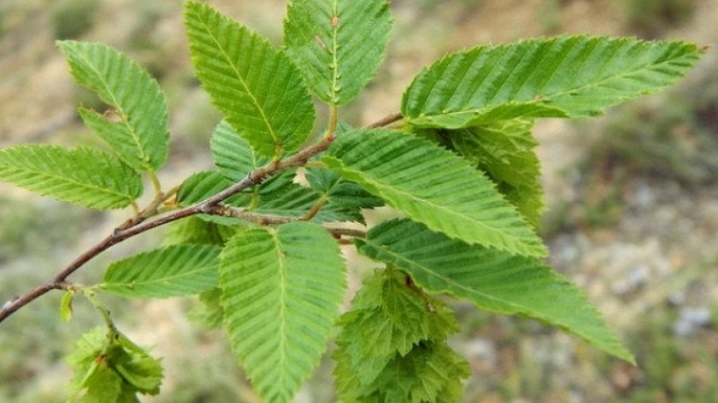
Planting and leaving
Hornbeam is an unpretentious culture, and does not require special care. The plant is not afraid of temperature jumps, does not suffer from lack of irrigation, and rarely becomes a target for insects or infections. The basis of crop care is regular watering and pruning - both formative and sanitary. Initially, the hornbeam should also be properly seated. It is better to place grown seedlings in a permanent habitat in the autumn, about a month before frost. If you have to plant a hornbeam in the spring, then it is important to keep pace until the buds wake up.
The place should be selected taking into account the further growth of the culture. The soil can be almost any, but not too wet or swampy. Young hornbeam will thrive best on loose and well-fed soil with good carrying capacity. A few days before planting, you will need to dig a square hole with sides of about 50 centimeters and clear it of weeds and remnants of roots. The pit is filled with 10 liters of water and left in this state for three days for the soil to be compacted.
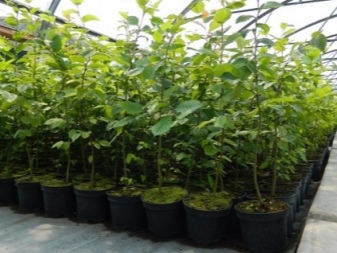
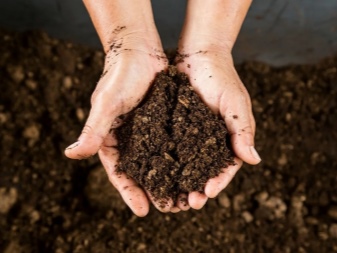
On the day of planting, at the bottom you will need to place a layer of dry foliage and top dressing, already mixed with the ground.
The seedling is neatly placed in the recess, its roots are straightened, and everything is covered with soil mixture. The surface is compacted and immediately irrigated. In addition, the peristemal circle is mulched with large sawdust or dry grass. When planting several specimens, it is important to keep a gap of 30 centimeters between them.
The developing tree will have to be regularly pruned, freeing it from sick, broken or dried shoots, and also examined for pests and diseases. Pruning can be done twice a year - in early spring or before the fall frosts in preparation for the winter season. By the way, it makes sense to remove those shoots that are covered with too many buds, which significantly depletes the culture.
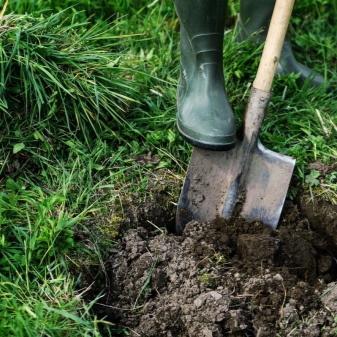

Reproduction
The hornbeam can be propagated in three main ways: by cuttings, by the seed method, or using layering. Reproduction by cuttings begins with the preparation of the material - for this purpose, healthy and strong branches are suitable, the length of which does not exceed 18 centimeters (ideally 15-18 cm). They will have to be separated from the mother tree in the fall, then immediately wrapped in a damp cloth and stored in a cool place until the onset of the spring season. It is better if it is a basement or cellar, but a refrigerator is also suitable.
Approximately a month or two before the planned planting, the cuttings will need to be brought into the house or pulled out of the refrigerator and soaked in a solution of potassium permanganate or in any other solution for diseases.
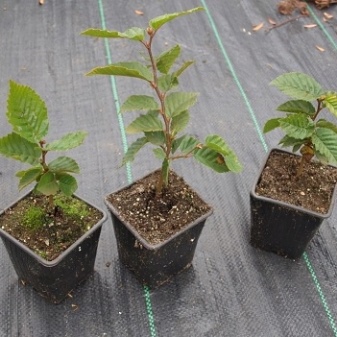

Then the shoots spend three days in clean, always raw water, and then they can be planted. Hornbeam requires the use of a nutrient soil that will be regularly moistened. You can transfer a seedling to a permanent habitat when at least 5 full-fledged leaves appear on the cuttings. Cuttings root successfully in almost half of the cases.
Seed propagation gives good results, but the process itself is considered quite labor intensive. Seeds are to be collected in early autumn. Immediately, the material is laid out in fabric bags or cardboard boxes and removed to a room with a low temperature - a cellar, basement or refrigerator. A month and a half before disembarkation, the shift will need to be taken out and transferred to a space where the temperature can be maintained from 21 to 25 degrees. After soaking the nuts in warm water, they can be placed in a container with fertile soil mixture.

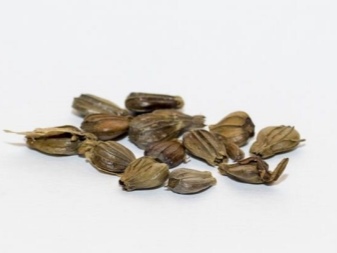
The first shoots should appear in three weeks, but the hornbeam can be sent to its permanent habitat only after 3-4 leaves appear. In about 40% of cases, the seeds germinate successfully. It should be added that some gardeners prefer to harden seeds before planting in the ground. For the first 15-60 days, the material is kept at a temperature of +20 degrees, and for the next 90-120 days, the temperature regime will have to be changed, lowering it to -10 degrees. These seeds are best planted in the fall.
Cuttings are used much less frequently than seeds and cuttings, however, in some cases this leads to satisfactory results. To obtain material for breeding, you will need to dig a small trench near the trunk with a sharp tool, which will then be filled with nutrients and water. Flexible young trunks lean towards the ditch and are fixed by the earth in those places where they are to take root. Of course, you will first need to make an incision along the length of the branch with a knife, from which the roots will appear.
New shoots and leaf blades should begin to germinate within a month. This will indicate that it is time to separate the cuttings from the main tree and transplant to a permanent habitat.
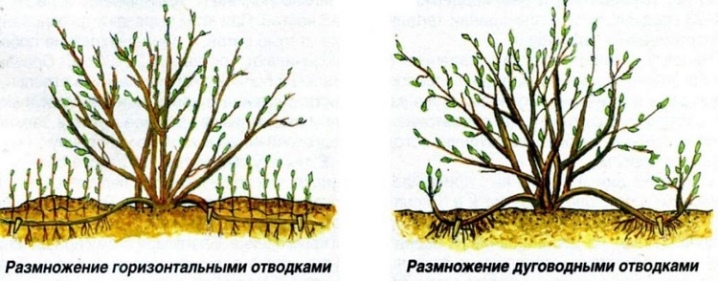
Wood properties
The smooth texture of the hornbeam is rather poorly expressed - in some cases, it is even impossible to distinguish annual rings on the cut. Nevertheless, the high density of heavy rock, an average of 750 kg / m3, and hence the strength of the material, explain the popularity of its use in various fields. A medium-sized deciduous tree, which is a relative of birch, has a Brinell hardness of up to 3.5 units.
It is quite difficult to cut or split it, but the resulting products have high wear resistance. It should be added that the performance of matt white wood remains at a height, provided that drying and processing technologies are followed. The sinuous internal structure, combining layers of different shades, is especially appreciated in the manufacture of parquet or hornbeam mosaics.

How to distinguish from an elm tree?
Many people confuse hornbeam with elm, but there are actually quite a few differences between the two breeds. The hornbeam leaf is symmetrical, unlike the elm tree. The gray hornbeam bark looks different from the brown elm bark. In the latter culture, it is also more coarse. The elm begins to bloom before the foliage appears, and the seeds ripen either in May or June. All key processes of the hornbeam occur much later.
In addition, outwardly, hornbeam flowers resemble birch catkins, and small and not very beautiful elm buds are collected in ordinary bunches.
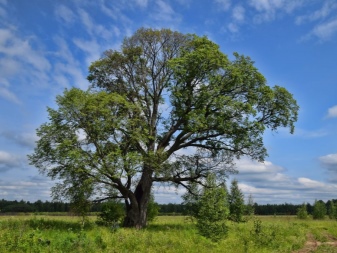
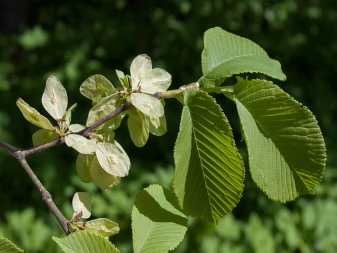
Where is it used?
The use of hornbeam is quite extensive. The first thing that comes to mind, of course, is landscape design. Since the culture responds well to different ways of cutting, the hornbeam can be used for the construction of hedges and for creating walls with gazebos. The tree looks good both alone and in a group. By the way, brooms for a bath made of hornbeam are especially appreciated.
Durable wooden products are actively used to create furniture, decor, or just on the farm. It can be large-sized items - a table or cabinet, and smaller items - a cutting board, musical instrument or sports equipment.Branches, leaves and nuts are eagerly consumed by livestock, and healthy oils are indispensable in cosmetology.
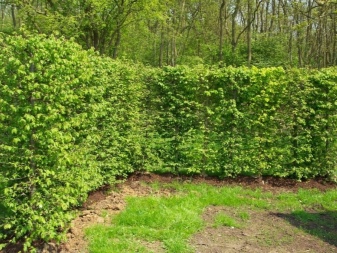
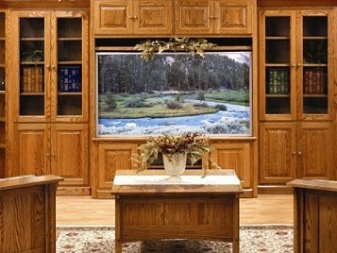





























































The comment was sent successfully.